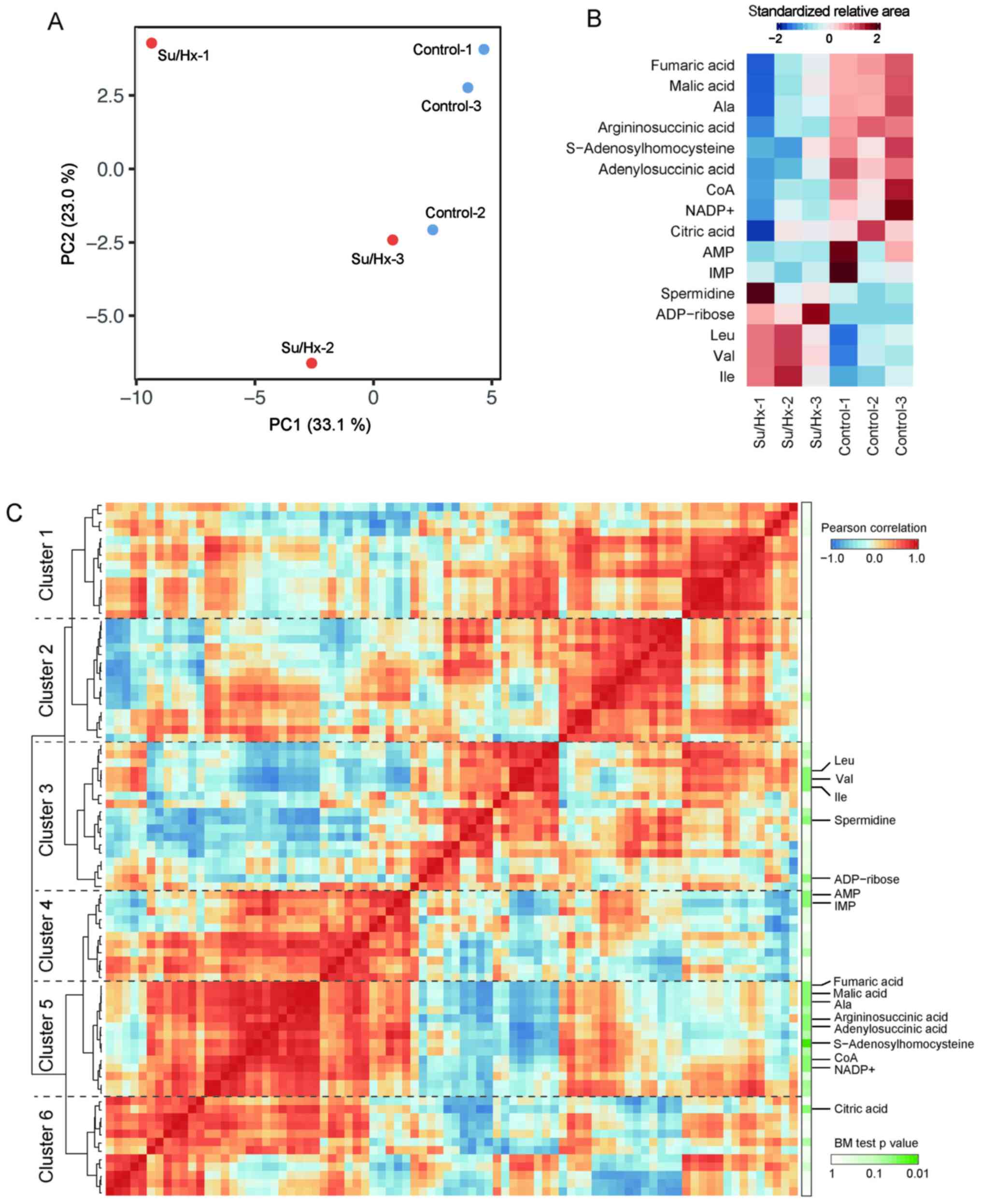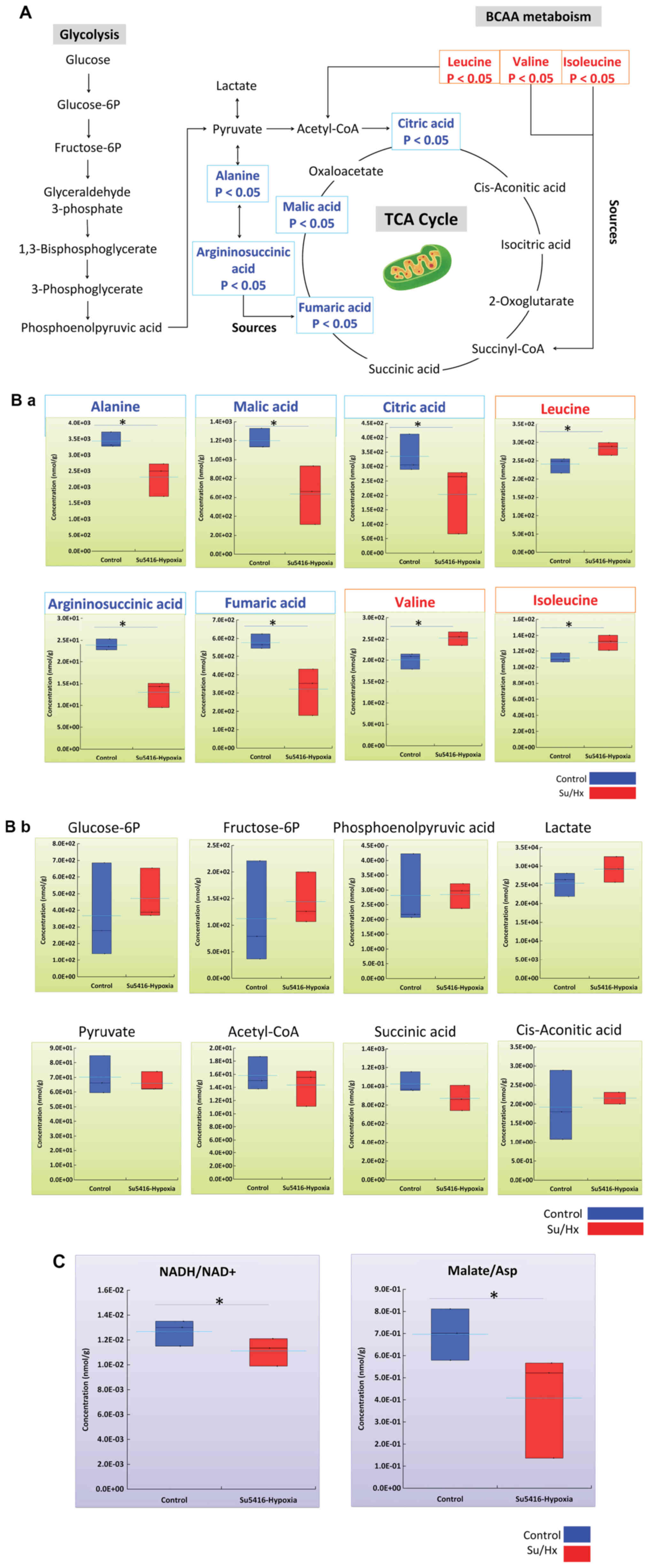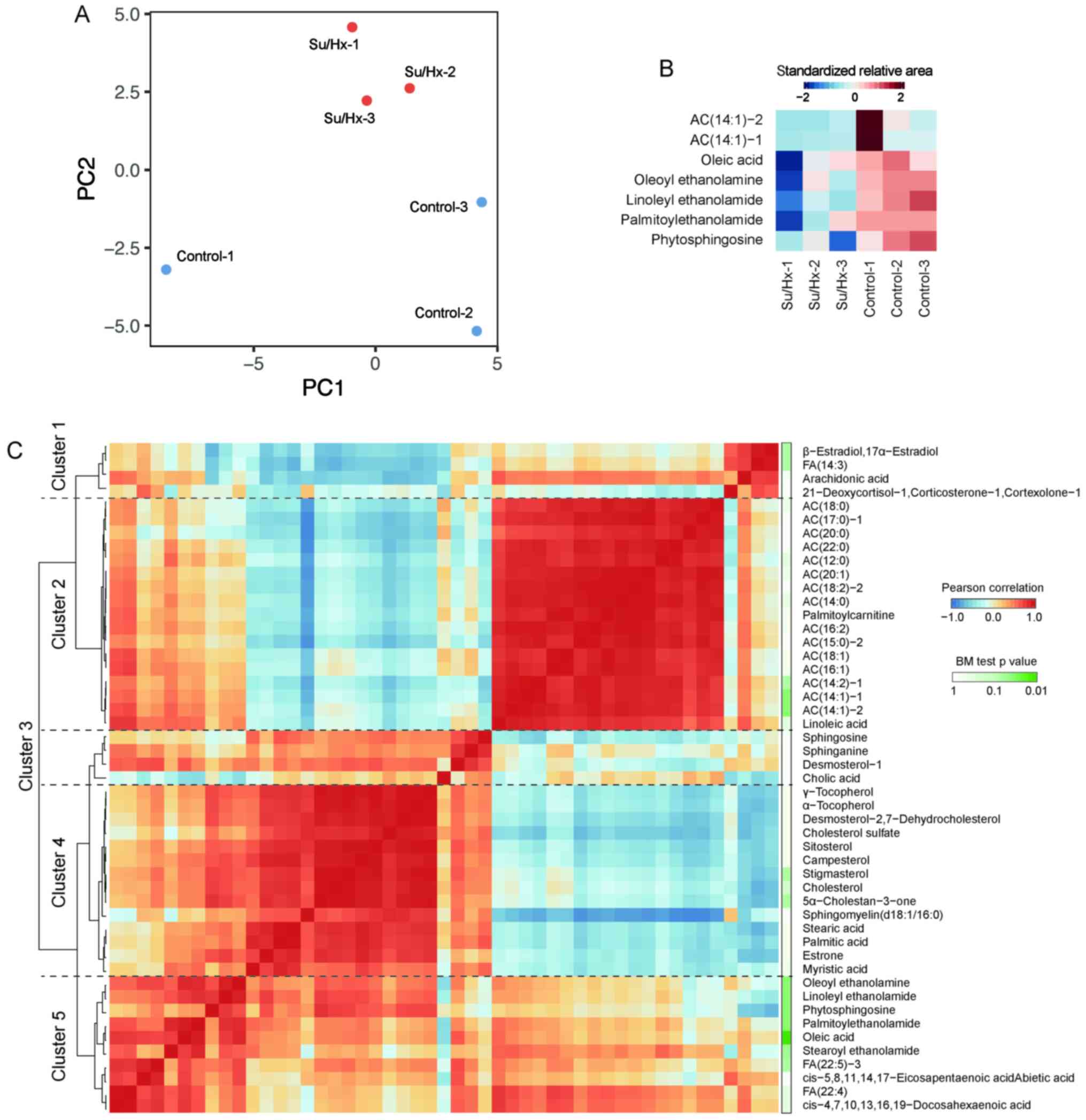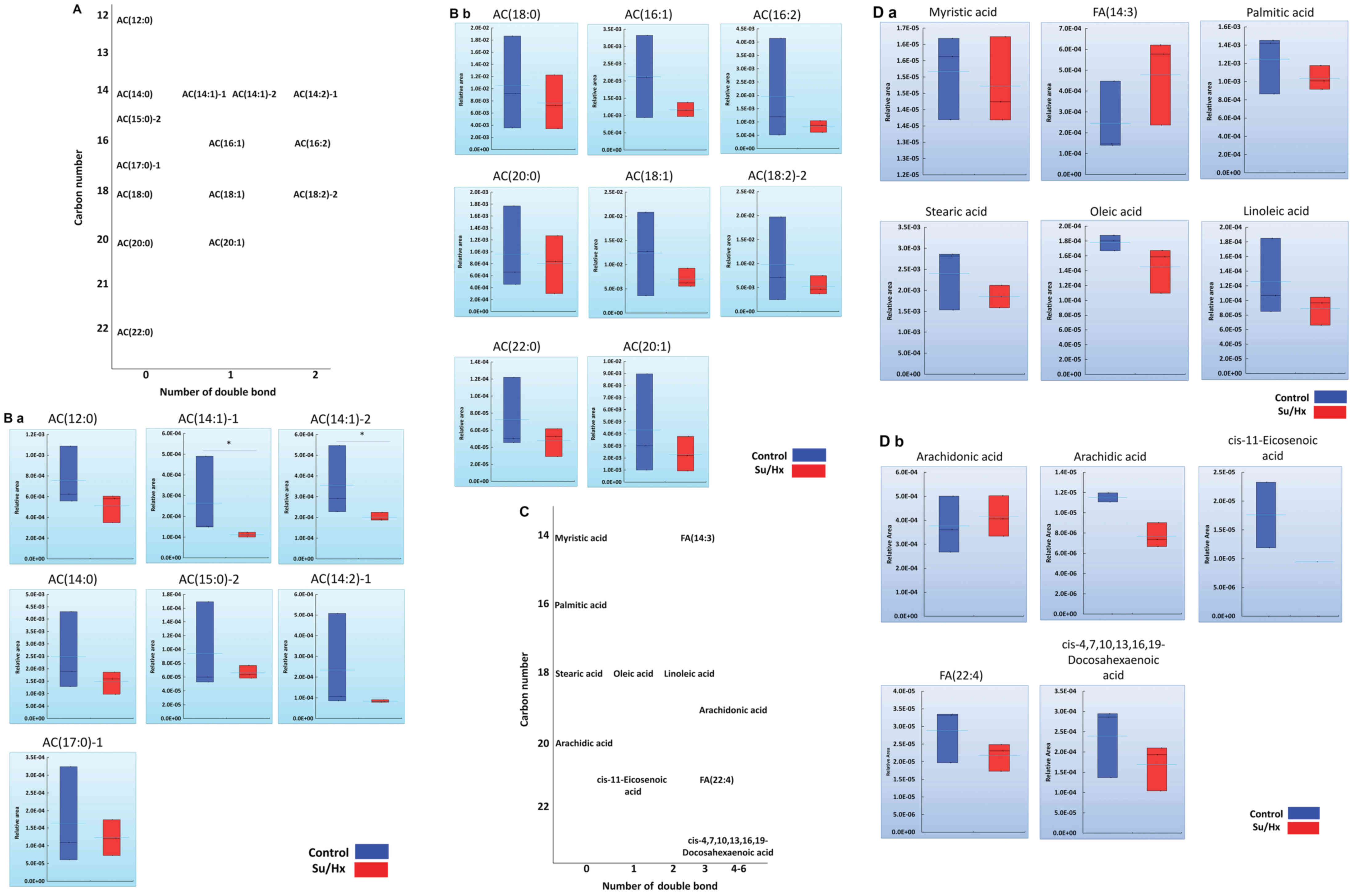|
1
|
Davie NJ, Schermuly RT, Weissmann N,
Grimminger F and Ghofrani HA: The science of endothelin-1 and
endothelin receptor antagonists in the management of pulmonary
arterial hypertension: Current understanding and future studies.
Eur J Clin Inves. 39 (Suppl):38–49. 2009. View Article : Google Scholar
|
|
2
|
Humbert M, Morrell NW, Archer SL, Stenmark
KR, MacLean MR, Lang IM, Christman BW, Weir EK, Eickelberg O,
Voelkel NF and Rabinovitch M: Cellular and molecular pathobiology
of pulmonary arterial hypertension. J Am Coll Cardiol. 43 (12 Suppl
S):13S–24S. 2004. View Article : Google Scholar : PubMed/NCBI
|
|
3
|
Oka M, Homma N, Taraseviciene-Stewart L,
Morris KG, Kraskauskas D, Burns N, Voelkel NF and McMurtry IF: Rho
kinase-mediated vasoconstriction is important in severe occlusive
pulmonary arterial hypertension in rats. Circ Res. 100:923–929.
2007. View Article : Google Scholar : PubMed/NCBI
|
|
4
|
Sakao S, Voelkel NF, Tanabe N and Tatsumi
K: Determinants of an elevated pulmonary arterial pressure in
patients with pulmonary arterial hypertension. Respir Res.
16:842015. View Article : Google Scholar : PubMed/NCBI
|
|
5
|
van de Veerdonk MC, Kind T, Marcus JT,
Mauritz GJ, Heymans MW, Bogaard HJ, Boonstra A, Marques KM,
Westerhof N and Vonk-Noordegraaf A: Progressive right ventricular
dysfunction in patients with pulmonary arterial hypertension
responding to therapy. J Am Coll Cardiol. 58:2511–2519. 2011.
View Article : Google Scholar : PubMed/NCBI
|
|
6
|
Freed BH, Gomberg-Maitland M, Chandra S,
Mor-Avi V, Rich S, Archer SL, Jamison EB Jr, Lang RM and Patel AR:
Late gadolinium enhancement cardiovascular magnetic resonance
predicts clinical worsening in patients with pulmonary
hypertension. J Cardiovasc Magn Reson. 14:112012. View Article : Google Scholar : PubMed/NCBI
|
|
7
|
Paulin R and Michelakis ED: The metabolic
theory of pulmonary arterial hypertension. Circ Res. 115:148–164.
2014. View Article : Google Scholar : PubMed/NCBI
|
|
8
|
Archer SL, Gomberg-Maitland M, Maitland
ML, Rich S, Garcia JG and Weir EK: Mitochondrial metabolism, redox
signaling, and fusion: A mitochondria-ROS-HIF-1alpha-Kv1.5
O2-sensing pathway at the intersection of pulmonary hypertension
and cancer. Am J Physiol Heart Circ Physiol. 294:H570–H578. 2008.
View Article : Google Scholar : PubMed/NCBI
|
|
9
|
Piao L, Fang YH, Cadete VJ, Wietholt C,
Urboniene D, Toth PT, Marsboom G, Zhang HJ, Haber I, Rehman J, et
al: The inhibition of pyruvate dehydrogenase kinase improves
impaired cardiac function and electrical remodeling in two models
of right ventricular hypertrophy: Resuscitating the hibernating
right ventricle. J Mol Med (Berl). 88:47–60. 2010. View Article : Google Scholar : PubMed/NCBI
|
|
10
|
Stanley WC, Lopaschuk GD, Hall JL and
McCormack JG: Regulation of myocardial carbohydrate metabolism
under normal and ischaemic conditions. Potential for
pharmacological interventions. Cardiovasc Res. 33:243–257. 1997.
View Article : Google Scholar : PubMed/NCBI
|
|
11
|
Sakao S, Miyauchi H, Voelkel NF, Sugiura
T, Tanabe N, Kobayashi Y and Tatsumi K: Increased right ventricular
fatty acid accumulation in chronic thromboembolic pulmonary
hypertension. Ann Am Thorac Soc. 12:1465–1472. 2015. View Article : Google Scholar : PubMed/NCBI
|
|
12
|
Sakao S, Daimon M, Voelkel NF, Miyauchi H,
Jujo T, Sugiura T, Ishida K, Tanabe N, Kobayashi Y and Tatsumi K:
Right ventricular sugars and fats in chronic thromboembolic
pulmonary hypertension. Int J Cardiol. 219:143–149. 2016.
View Article : Google Scholar : PubMed/NCBI
|
|
13
|
Fang YH, Piao L, Hong Z, Toth PT, Marsboom
G, Bache-Wiig P, Rehman J and Archer SL: Therapeutic inhibition of
fatty acid oxidation in right ventricular hypertrophy: Exploiting
Randle's cycle. J Mol Med (Berl). 90:31–43. 2012. View Article : Google Scholar : PubMed/NCBI
|
|
14
|
Buermans HP, Redout EM, Schiel AE, Musters
RJ, Zuidwijk M, Eijk PP, van Hardeveld C, Kasanmoentalib S, Visser
FC, Ylstra B and Simonides WS: Microarray analysis reveals pivotal
divergent mRNA expression profiles early in the development of
either compensated ventricular hypertrophy or heart failure.
Physiol Genomics. 21:314–323. 2005. View Article : Google Scholar : PubMed/NCBI
|
|
15
|
Faber MJ, Dalinghaus M, Lankhuizen IM,
Bezstarosti K, Dekkers DH, Duncker DJ, Helbing WA and Lamers JM:
Proteomic changes in the pressure overloaded right ventricle after
6 weeks in young rats: Correlations with the degree of hypertrophy.
Proteomics. 5:2519–2530. 2005. View Article : Google Scholar : PubMed/NCBI
|
|
16
|
Faber MJ, Dalinghaus M, Lankhuizen IM,
Bezstarosti K, Verhoeven AJ, Duncker DJ, Helbing WA and Lamers JM:
Time dependent changes in cytoplasmic proteins of the right
ventricle during prolonged pressure overload. J Mol Cell Cardiol.
43:197–209. 2007. View Article : Google Scholar : PubMed/NCBI
|
|
17
|
Gomez-Arroyo J, Mizuno S, Szczepanek K,
Van Tassell B, Natarajan R, dos Remedios CG, Drake JI, Farkas L,
Kraskauskas D, Wijesinghe DS, et al: Metabolic gene remodeling and
mitochondrial dysfunction in failing right ventricular hypertrophy
secondary to pulmonary arterial hypertension. Circ Heart Fail.
6:136–144. 2013. View Article : Google Scholar : PubMed/NCBI
|
|
18
|
Wishart DS: Current progress in
computational metabolomics. Brief Bioinform. 8:279–293. 2007.
View Article : Google Scholar : PubMed/NCBI
|
|
19
|
Kato F, Sakao S, Takeuchi T, Suzuki T,
Nishimura R, Yasuda T, Tanabe N and Tatsumi K: Endothelial
cell-related autophagic pathways in Sugen/hypoxia-exposed pulmonary
arterial hypertensive rats. Am J Physiol Lung Cell Mol Physiol.
313:L899–L915. 2017. View Article : Google Scholar : PubMed/NCBI
|
|
20
|
Ohashi Y, Hirayama A, Ishikawa T, Nakamura
S, Shimizu K, Ueno Y, Tomita M and Soga T: Depiction of metabolome
changes in histidine-starved Escherichia coli by CE-TOFMS. Mol
Biosyst. 4:135–147. 2008. View
Article : Google Scholar : PubMed/NCBI
|
|
21
|
Ooga T, Sato H, Nagashima A, Sasaki K,
Tomita M, Soga T and Ohashi Y: Metabolomic anatomy of an animal
model revealing homeostatic imbalances in dyslipidaemia. Mol
Biosyst. 7:1217–1223. 2011. View Article : Google Scholar : PubMed/NCBI
|
|
22
|
Sugimoto M, Wong DT, Hirayama A, Soga T
and Tomita M: Capillary electrophoresis mass spectrometry-based
saliva metabolomics identified oral, breast and pancreatic
cancer-specific profiles. Metabolomics. 6:78–95. 2010. View Article : Google Scholar : PubMed/NCBI
|
|
23
|
Junker BH, Klukas C and Schreiber F:
VANTED: A system for advanced data analysis and visualization in
the context of biological networks. BMC Bioinformatics. 7:1092006.
View Article : Google Scholar : PubMed/NCBI
|
|
24
|
Brunner E and Munzel U: The nonparametric
Behrens-Fisher problem: Asymptotic theory and a small-sample
approximation. Biom J. 42:17–25. 2000. View Article : Google Scholar
|
|
25
|
Håugaa H, Thorgersen EB, Pharo A, Boberg
KM, Foss A, Line PD, Sanengen T, Almaas R, Grindheim G, Pischke SE,
et al: Early bedside detection of ischemia and rejection in liver
transplants by microdialysis. Liver Transpl. 18:839–849. 2012.
View Article : Google Scholar : PubMed/NCBI
|
|
26
|
Ramsay RR, Gandour RD and van der Leij FR:
Molecular enzymology of carnitine transfer and transport. Biochim
Biophys Acta. 1546:21–43. 2001. View Article : Google Scholar : PubMed/NCBI
|
|
27
|
Kyoto Encyclopedia of Genes and Genomes
(KEGG), . Alanine, aspartate and glutamate metabolism - Mus
musculus (mouse). https://www.genome.jp/kegg-bin/show_pathway?org_name=mmu&mapno=00250&mapscale=&show_description=hideMarch
8–2018
|
|
28
|
Kim Y, Goto H, Kobayashi K, Sawada Y,
Miyake Y, Fujiwara G, Chiba H, Okada T and Nishimura T: Detection
of impaired fatty acid metabolism in right ventricular hypertrophy:
Assessment by I-123 beta-methyl iodophenyl pentadecanoic acid
(BMIPP) myocardial single-photon emission computed tomography. Ann
Nucl Med. 11:207–212. 1997. View Article : Google Scholar : PubMed/NCBI
|
|
29
|
Bogaard HJ, Natarajan R, Henderson SC,
Long CS, Kraskauskas D, Smithson L, Ockaili R, McCord JM and
Voelkel NF: Chronic pulmonary artery pressure elevation is
insufficient to explain right heart failure. Circulation.
120:1951–1960. 2009. View Article : Google Scholar : PubMed/NCBI
|
|
30
|
Adam J, Yang M, Bauerschmidt C, Kitagawa
M, O'Flaherty L, Maheswaran P, Özkan G, Sahgal N, Baban D, Kato K,
et al: A role for cytosolic fumarate hydratase in urea cycle
metabolism and renal neoplasia. Cell Rep. 3:1440–1448. 2013.
View Article : Google Scholar : PubMed/NCBI
|
|
31
|
Lewis GD, Ngo D, Hemnes AR, Farrell L,
Domos C, Pappagianopoulos PP, Dhakal BP, Souza A, Shi X, Pugh ME,
et al: Metabolic profiling of right ventricular-pulmonary vascular
function reveals circulating biomarkers of pulmonary hypertension.
J Am Coll Cardiol. 67:174–189. 2016. View Article : Google Scholar : PubMed/NCBI
|
|
32
|
Rhodes CJ, Ghataorhe P, Wharton J,
Rue-Albrecht KC, Hadinnapola C, Watson G, Bleda M, Haimel M,
Coghlan G, Corris PA, et al: Plasma metabolomics implicates
modified Transfer RNAs and altered bioenergetics in the outcomes of
pulmonary arterial hypertension. Circulation. 135:460–475. 2017.
View Article : Google Scholar : PubMed/NCBI
|


















